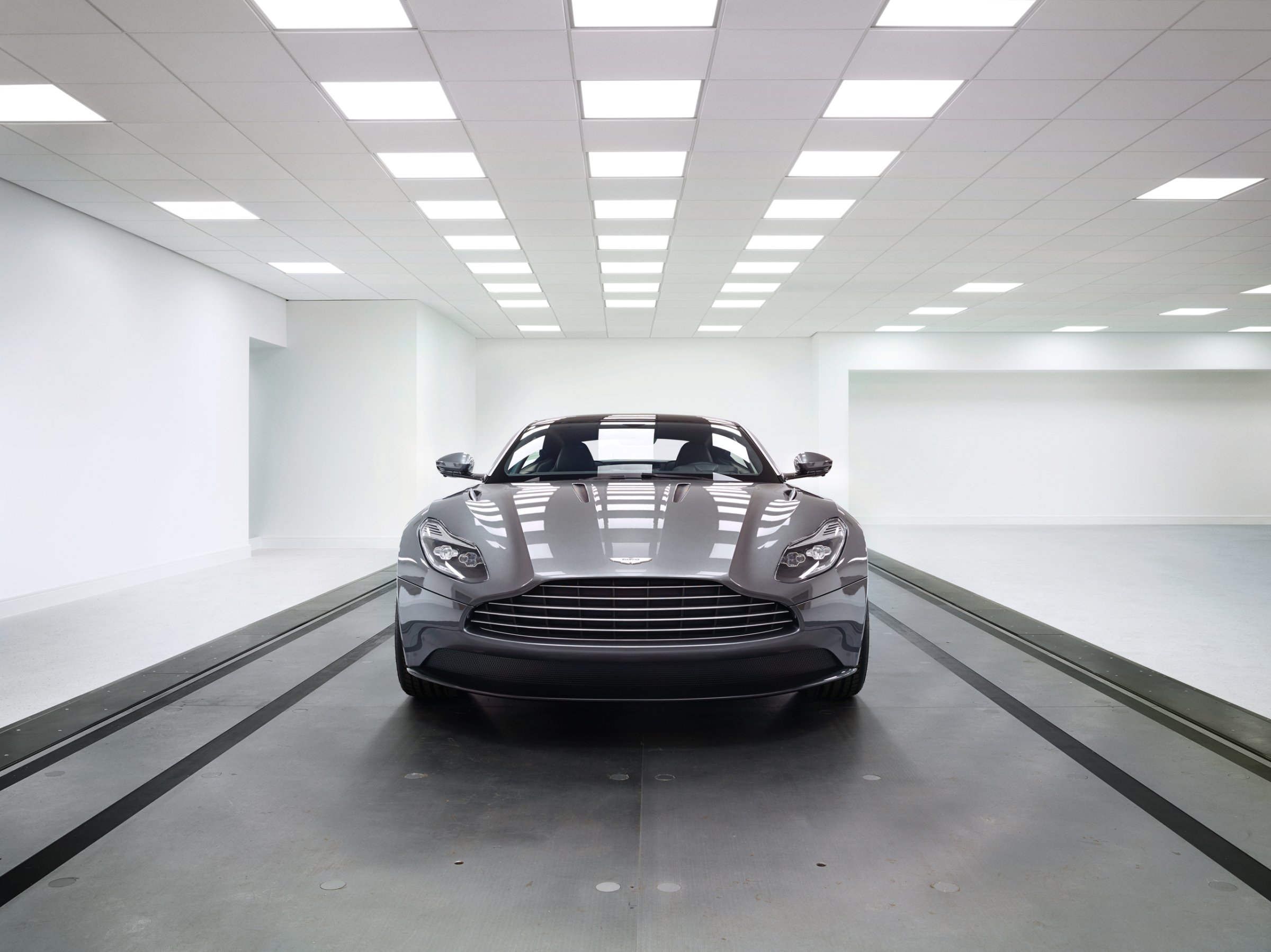
As the first comprehensively new production Aston Martin in over a decade, the DB11 is a critical machine. Not only must it bear comparison with some of the most acclaimed cars of all time, in terms of aesthetics at least, it is also a showcase for the British company’s new technology.
Under new CEO Andy Palmer, Aston Martin has committed to several years of frantic intensity. A steady flow of concepts and bespoke cars, like the track-only Vulcan, have kept the company in the public eye, while behind the scenes, the focus has been on shaping the cars that will define Aston Martin’s second century of production. Most of the world got a first glimpse of the DB11 at the Geneva Motor Show in March, but a select group has been enjoying private previews of the all-new GT for months. Wallpaper* can count itself among these lucky few, with our big reveal taking place under the guidance of Aston Martin’s design director Marek Reichman at the manufacturer’s HQ in Gaydon.
Of all the lineages in modern car design, the DB bloodline is one of the most evocative, dating back to David Brown’s acquisition of Aston Martin in 1947. The first car to bear the DB nomenclature was the 1950 DB2. The DB10 (2015) was custom built for a certain fictional secret agent, while the DB9 was a sales success that remained uncompromised and highly desirable right up to the last model to leave the production line.
The DB11 has a lot to live up to. The new car builds on the Aston aesthetic yet still looks defiantly forward. Those all-important proportions are spot-on, yet the detailing is also first-rate, from the anodized aluminum Aston Martin wings set into the bonnet to the strong feature line that runs from the headlights to the tapered rear. “Every single line has been conceived to be consequent with the next,” says Reichman. “Beauty is enabled by technological innovation.”
The duck-tailed rear is where the car departs most dramatically from its forebears, thanks to an aerofoil system that scoops in air and vents it out to generate a vertical blast of invisible downforce on the back of the car. Aerodynamics also guide the air intake on the flanks via Aston Martin’s signature “side strake.” Shaped like an unsheathed dagger, the attention to detail is such that the underside of this piece of brightwork is hand-finished with a tactile knurled pattern, invisible to all but those in the know.
Inside, the longer wheelbase means much improved interior accommodation. There’s a new multimedia and navigation system (a benefit of Aston Martin’s technical partnership with Mercedes-AMG), thin-film transistor dashboard and 5.2-L twin turbocharged V12, Aston Martin’s first foray into forced induction. The DB11 has to navigate the strident demands of its clients, for whom a V12 is a signature component, and legislators, for whom a V12 is a thunderous anachronism. “The beauty of a V12 is that it’s perfectly balanced,” says Ian Minards, Aston Martin’s product-development director, who guided the DB11 from sketch to reality. He describes the car as a continuation of the DB lineage, but also “as clean a sheet of paper as you can get at Aston Martin.”
Aston Martin DB11, $220,000, first deliveries due autumn 2016, astonmartin.com
More Must-Reads From TIME
- The 100 Most Influential People of 2024
- The Revolution of Yulia Navalnaya
- 6 Compliments That Land Every Time
- What's the Deal With the Bitcoin Halving?
- If You're Dating Right Now , You're Brave: Column
- The AI That Could Heal a Divided Internet
- Fallout Is a Brilliant Model for the Future of Video Game Adaptations
- Want Weekly Recs on What to Watch, Read, and More? Sign Up for Worth Your Time
Contact us at letters@time.com